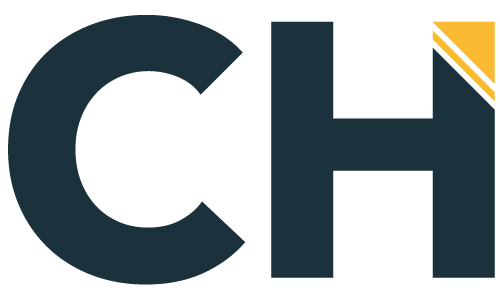Did you know that the number of telecommuting workers has increased 115% in a decade, translating to 3.9 million workers (3% of the U.S. workforce) working from home? According to Forbes, the top 100 companies that offer a Work at Home model include Amazon, Salesforce, UnitedHealth Group, Hilton Worldwide, and Xerox. Big name companies such as these are even influencing even more companies to follow suit.
As you reflect on this topic, I’m sure you have many questions: What are the reasons more and more companies embrace the idea of a Work at Home model? How does this play out in terms of productivity, efficiency and cost? What do you and your agents stand to gain from a Work at Home model? What is holding you back from pursing a Work at Home model now?
Let’s take a look at how a Work at Home model can impact your business:
Increased Savings
Rising cost of real estate and maintenance of work space is a major concern worldwide. According to Forbes Magazine, Aetna shed 2.7 million square feet of office space by 14,500 of 35,000 employees not having an in office desk saving $78 million. In another case, American Express reported a saving of $10 million – $15 million by moving to remote working options. To help mitigate costs, remote working and effective collaboration tools and processes can serve well as an expansion strategy. When your agents are provided with the opportunity to work from home, your business can experience significant cost savings.
Better Work-Life Balance for Employees
More and more people are tired of long commutes and long hours, and are desperate to find a better work-life balance. A Work at Home model can help with that by allowing your agents to skip the dreaded daily commute. As employees save more time and money, they are more likely to have a better work-life balance. This positive impact on work-life balance for your agents will not only improve their health and well-being by reducing stress, it will also increase morale and job satisfaction which will in turn increase productivity. By providing your employees with the opportunity for an improved work-life balance, it also boosts your competitiveness by placing you as a company that people want to work for which in turn attracts top talent.
Higher Efficiency
For employers, a Work at Home model can impact the company’s bottom line by limiting absences, increasing productivity, and saving money. This is attributed to fewer distractions from fellow employees and a motivation to prove offsite effectiveness. Although many may think that Work at Home agents may be more distant due to their location, a Harvard Business Review article shows that Remote employees are known to be more engaged than office workers. This is attributed to advanced collaboration tools which include video conferencing, chat and screen sharing.
Another thing to note on efficiency is that remote employees are known to take less time off and work longer hours than they normally would. In fact, office workers who are sick are less likely to come into work at all for reasons such as general discomfort and fear of spreading their illness to the office. In contrast, remote workers are more likely to continue working since they will already be in the comfort of their own home.
Lower employee turnover
The Work at Home model is known to reduce employee turnover and increase employee loyalty. In a study, Stanford University found that Job attrition rates fell by 50%. Another survey by Owl Labs and TINYPulse released a recent State of Remote Work report that shows that companies that provide a Work at Home model experience 25% lower employee turnover than companies that don’t support remote work. This can be attributed to your agents’ appreciation of the flexibility they have to work from home. As stated earlier, the increased job satisfaction and work-life balance will contribute to increased employee retention.
Better Customer Experience
We previously discussed the impact that a Work at Home model can have on your agent–doesn’t it make sense that it can also impact the customer experience? Happy agents are productive agents, but it also means that they are directly influencing your customer experience. When you have agents that like (or even love!) working for you, they are more likely to show up to work everyday, stay with you longer, and provide excellent customer service. Happy agents are also more likely to build more positive relationships with your customers, provide knowledgeable service, and put the company’s best face forward. It’s a win for everyone!
Thinking about a Work at Home model?
Although a Work at Home model can be beneficial for many organizations, it does not mean it is right for every company and every position. When considering this employee model, there are some important things to keep in mind:
- Technology: Thinking of remote connectivity and collaboration, keep in mind that it brings in new challenges from the angles of security, connectivity, workflow and bandwidth. This will also put a demand on hardware or cloud resources. Moving to remote working options means your employees should find it super easy to connect and collaborate online. In simple terms, this should be accomplished within 1 or 2 clicks within the network.
- Software Acquisition and Content Review: Remote working will also require the use of new software for live or self-directed training. Existing content will have to be revamped fully or partially (as applicable) to reflect new objectives, timing, outputs, and resources.
- Disciplined Remote Agents: A Work at Home model is great, but it’s not for everyone! Remote working does need a certain level of discipline and sincerity. It also needs your employees to adhere to certain code of conduct and compliance to internal productivity norms. When considering which employees you will allow to work remotely, you should consider those that are already performing well and need minimal supervision.
- Support: Even with the best technology and agents in place, it is CRUCIAL that you consider the support processes you have in place. When they have a computer issue, who do they call? When they need assistance with an urgent matter, how accessible is supervisor support? These are just a few critical questions you need to consider when creating a Work at Home model.
Want to utilize a remote working strategy for your organization? We can help your organization with our Strategic Contact Center Assessment where we will assess your readiness and create an actionable plan and Roadmap for your new Work at Home model. Please contact me directly so I can learn more about your organizational needs.




